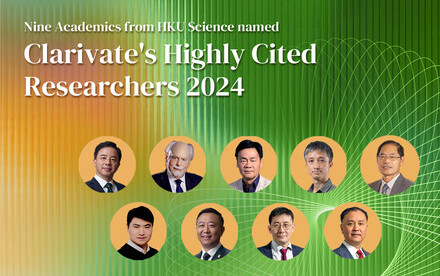06 May 2019
Monte Carlo study led by HKU physicist reveals the parent state of quantum phases

Dr Zi Yang MENG
Teaser
Numerical simulations provide the first concrete evidence of 2D (U1) deconfined matter, an exotic phase whose existence has been hotly pursued by both condensed-matter and high-energy physicists.
About the research
An international research team, led by Dr Zi Yang Meng, Associate Professor from the Department of Physics and the Institute of Physics, Chinese Academy of Sciences, comprised of Dr Xiao Yan Xu from Hong Kong University of Science and Technology, Dr Yang Qi from Fudan University, Dr Long Zhang from Kavil Institute of Theoretical Sciences, Chinese Academy of Sciences, Professor Cenke Xu from University of California, Santa Barbara and Professor Fakher Assaad from University of Wuerzburg, have made a substantial discovery in novel state of quantum matter via large-scale Monte Carlo simulations and field theoretical analysis. The research work is published in the latest issue of Physical Review X – the leading journal of American Physical Society – (link). Below is a brief description of their story:
An exotic two dimensional state of matter known as a U(1) Dirac spin liquid could help condensed-matter physicists explain perplexing observations of many high-temperature superconductors and frustrated magnets. High-energy physicists are also interested in these spin liquids as they might be a key to understand predictions from quantum electrodynamics of a “deconfined” state of matter, one where elementary particles split from a conventional description of particles or fields. And yet neither community knows whether this phase even exists. Here, the aforementioned team use computer simulations, performed on the two of world largest supercomputers Tianhe-1A and Tianhe-II in the National Supercomputer Centers in Tianjin and Guangzhou, China, to provide for the first time concrete evidence of its existence.
The emergence of a U(1) Dirac spin liquid (or “deconfined matter”, in the parlance of high-energy physics) depends on two ingredients: a (U1) gauge field and a spinon. A spinon is a “fractional” spin of a fermion, whereas the (U1) gauge field mediates interactions between spinons. It is thought that a spin liquid arises when spinons and their gauge field are put on a 2D square lattice. To explore this possibility, they designed a model by discretizing U(1) gauge fields into a space-time lattice that interacts with fermions, see Fig.1 for schematic description of the model and the U1 Dirac spin liquid state.

Fig.1. Schematic plot of the lattice model of fermion fields coupled with U1 gauge fields and the deconfined state in which the fermions (spinons) form the so-call Dirac cones (the blue cones with their linear dispersion) and coupled with the flucutations U1 gauge fields (the yellow waves). [Image by Leran Liu]
Using state-of-the-art quantum Monte Carlo simulations, performed on two of the world largest supercomputers (Tianhe-1A and Tianhe-2 in the National Supercomputer Centers in Tianjin and Guangzhou, respectively), they simulated the model with various fermion species and found, in all cases, a smoking gun signature of 2D U(1) deconfined matter. By tuning coupling constants in the model, they also observed continuous transitions between deconfined and confined states. One particular fermion species (4) also exhibits a novel type of quantum critical point – the deconfined quantum critical point – which is also under intensive investigations from other areas in condensed matter and high-energy physics. It is believed that the richness of the phase diagram and firm existence of the U(1) deconfined state of matter will trigger a number of future investigations on the numerical and analytical fronts in the condensed-matter and high-energy communities.
Acknowledgement
The large-scale simulations are performed on the Tianhe-1A platform at the National Supercomputer Center in Tianjin and Tianhe-2 platform at the National Supercomputer Center in Guangzhou, the authors acknowledge the technical support and generous allocation of CPU time from these centers. The authors also thank the funding support from the HKRGC through HKUST3/CRF/13G and C6026-16W, the Ministry of Science and Technology of China through the National Key Research and Development Program (2016YFA0300502, 2018YFA0305802), the Strategic Priority Research Program of the Chinese Academy of Sciences (XDB28000000, XDPB08-4, XDB28040200), the National Science Foundation of China (11574359, 11674370) and the DFG research unit FOR1807.
Journal Reference
Monte Carlo Study of Lattice Compact Quantum Electrodynamics with Fermionic Matter: The Parent State of Quantum Phases,
Xiao Yan Xu, Yang Qi, Long Zhang, Fakher F. Assaad, Cenke Xu, and Zi Yang Meng, Phys. Rev. X 9, 021022 (2019)
(link of the paper)






